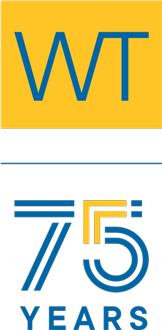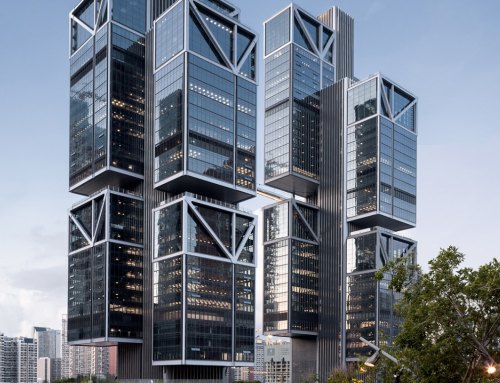The design, construction and operation of “Green Buildings” is widely acknowledged as a solution to negate global climate change. Various Green Building certification programs have been developed and implemented across the globe, which aim to help building developers and operators be environmentally responsible and use resources efficiently.
LEED
Leadership in Energy and Environmental Design (LEED), was one of the first building certification programs, and possibly is the most widely used worldwide. It was developed in the USA in 1993. Taipei 101 which is the world’s tallest LEED Platinum certified building.
The take-up of the LEED program in Indonesia has been slow. The first LEED buildings were certified in 2011 and to date less than 20 buildings have been certified in Indonesia, of which most of the projects are industrial.
Green Mark
In Singapore the BCA Green Mark Scheme was launched in 2005 to promote sustainability in the built environment and raise environmental awareness among developers, designers and builders. It was almost immediately widely used in Singapore.
Green Mark was one of the first green building certification programs established in Asia and as such, by 2011, some 120 projects outside of Singapore had applied for Green Mark certification which comprised mainly countries from S/E Asia including Indonesia.
Green Mark has had a head start of 4 years versus Indonesia’s first green building program (Greenship). With close proximity to Jakarta, Singapore based design consultants, contractors and developers working in Indonesia, have influenced the construction industry to introduce and adopt Green Mark.
Green Mark has a strong emphasis on energy efficiency which includes the thermal performance of the building envelope and air conditioning systems. Singapore buildings experience significant heat load from the harsh tropical sun which is not dissimilar to Jakarta. Green Mark therefore has been far more widely used in Jakarta than LEED, however in actual fact the respective percentages of points for building thermal performance and air conditioning systems are fairly similar.
Greenship
The Green Building Council of Indonesia was established in 2009 and the benchmark scheme rating green buildings is called “Greenship”.
The Greenship scheme has been established for:
- New buildings,
- Existing buildings,
- Interior spaces,
- Homes and
- Neighbourhoods
The six categories of criteria for “New buildings” (Version 1.2) and their respective credit points to determine assessment, are:
- Appropriate Site Development, 17 points
- Energy Efficiency and Conservation, 26 points
- Water Conservation, 21 points
- Materials and Resources Cycle, 14 points
- Air quality and leisure air, 10 points
- Building and environment management, 21 points
Total points: 101.
According to the Green Building Council as at May 2016 some 164 buildings are at under the building certification process and 21 buildings have been fully certified Greenship.
Green Building Scheme Uptake
The uptake of a green building scheme in Jakarta has been slow primarily due to the upfront additional costs.
However amongst the owners, there is a distinct difference between developers who lease or sell their buildings as compared to owner-occupiers. Owner occupiers are far more serious to obtain a green building scheme certification and are prepared to pay higher costs and comprise the majority of certified buildings since it is in their interests to develop buildings with lower operational costs.
A prime example, is high performance glass and sun shading to a building façade which reduces the heat load on a building which is very important in the sweltering Jakarta climate. The reduction in heat load results in reductions and therefore savings to air conditioning plant and the knock-on saving to this is reduced electrical plant capacities, reduced bus-ducts and cables, reduced power connection and power consumption fees.
The first double glazed commercial office buildings were built in Jakarta in 2005. Due to the availability and competitive pricing of high quality high performance double glazing, manufactured in China, since 2010, double-glazing to commercial office buildings and 5-star hotels in Jakarta has become increasingly popular.
Green building schemes have assisted the decision by developers to install such façade types.
Another significant benefit of double-glazing is improved acoustic performance – very important in a noisy city such as Jakarta with over 6 million motor bikes! The improved acoustic performance is such that office workers often listen to music at the workstations as they are finding the office environment just too quiet … something strange to life in Indonesia!
Prior to Greenship, international developers in Jakarta, predominately adopted Green Mark as green building scheme. The World Trade Center II in South Jakarta, completed 2011, was one of the first commercial office towers to obtain a Green Mark Gold Certification.
Based on the current [2018] commercial office market conditions in Jakarta – the competition to sign up international tenants is extremely fierce amongst building operators. Those buildings with a certified green building scheme are in a far better position to sign up international tenants and also some local tenants. Certain tenants infact, will not consider a building without a green building scheme certification. Developers are becoming more aware of this!
A look forward…..
Greenship and to a lesser extent, Green Mark, will become increasingly popular in Jakarta to the extent that within the next 5 years, most new commercial office buildings marketed as Grade A standard will have to pursue such a scheme.
This bodes well for, not only for Jakarta’s built environment and natural, but also the office workers accommodated in the buildings!







